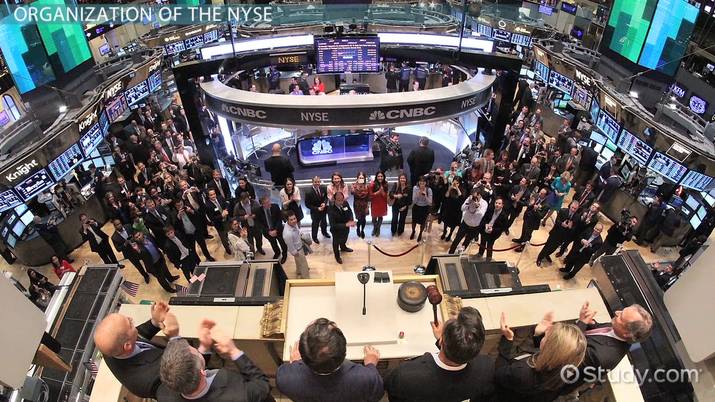A man asked a supermarket owner, “Who sets your prices?”.
“Why of course I do,” the owner said, indignantly.
“In that case, why don’t you double them?” the other man challenged.
“Don’t be silly, then I would have no customers.”
“Well, if you want more customers, why not just cut your prices in half?”
“What do you think I am, a philanthropist? If I halved my prices, I would go bankrupt.”
“So, who really sets your prices then?” said the man.
In any market, the customer always sets the price. The shopkeeper simply records the price at which his goods trade, and they trade at prices that are set by forces outside his control. The shopkeeper wants to make an acceptable profit on his goods, and the customer wants to buy goods at an acceptable price. The market price is set at where these two desires meet.
To understand how stocks trade, it is helpful to consider how any good or service trades in a market. A producer makes a product but has no idea how to price it in the market. What does he do? He goes through a process of price discovery. Basically, price discovery involves finding where supply and demand meet. Let’s say a car manufacturer produces a new car that has never been sold before, and he has no idea how to price it. He could start by listing the car at $100. At that price, the car immediately sells.
He says, “Okay, that price was too low. The car sold, but I will lose money selling at that price. I will make the price higher.”
He then prices the car at $500,000. After a week of waiting and many people laughing at him, the car has not sold.
That price was too high. Surely, he would make a lot of money at that price, but not if nobody bought a car. Has he learned anything so far? Yes, as he now knows that the correct price of his car is somewhere between $100 and $500,000. This is price discovery. He could then increase the price of his cars to $10,000. If his cars sell quickly at that price, he could raise the price to $200,000. If none sell at that price, he can keep narrowing the range until he finds the correct price somewhere in the middle.
The correct price for the market for his cars is a combination of the price that causes the consumer to purchase a car and a price that makes the seller happy as well, which is one where he can make sell his cars at an acceptable profit. The correct price for any good or service is at the intersection of supply and demand. That intersection is the price at which both the buyer and the seller walk away from the transaction happy.
Price discovery should be considered the central function in any marketplace whether it be a financial exchange or the local farmer’s market. The market itself brings potential buyers and sellers together to conduct business transactions. As buyers and sellers meet, a marketplace allows all parties to interact and by doing so a consensus price is established.
The buying and selling of stocks on a stock exchange involves a very pure form of price discovery at its essence. On every day of trading, investors who want to buy a stock and those who want to sell that stock come together to attempt to trade shares to each other. Whether at the 240-year old traditional New York Stock Exchange or on today’s all-electronic exchanges, the principals are exactly the same. There is always a middleman. That middleman might be a specialist at the NYSE or a trading inventory on an electronic exchange.
The middleman makes a small commission on each trade that she transacts, so it is in the middleman’s best interest to find the exact price that brings in the most buyers and most sellers at the same time. The specialist could price her inventory of Apple shares at $1 million apiece, but she wouldn’t sell any. Or she could price her Apple shares at ten cents, but the shares would immediately sell, and she would have no shares left to sell. That’s because no one would sell Apple shares to her for ten cents. The best market price for this middleman is the price at which the most buyers and sellers are happy with at the same time.
For Apple stock the best price on a given day may be $220. Everybody seemed to like that price that day; buyers were happy to buy stock at that price and sellers were happy to let their shares go at that price. But let’s say that after the close of trading that day, Apple released sales numbers that were much lower than expected. Investors were disappointed in the news, and there were now no investors that wanted to buy Apple stock for $220. Of course, there were many investors who wanted to sell stock at that $220 price, but if there are no buyers at that price, then the price is wrong. That’s because the price is no longer at the intersection of supply and demand. The middleman now must discover a new price that makes both buyers and sellers happy.
Her mission is now price discovery again. She may list a buy price for Apple shares of $214, but if there are no buyers there, then she may list $212. If there are no buyers there? She may list $210. Ah! She discovers some buyers at that price. She continues to probe and discovers that the perfect price is $209.50. That’s where the most buyers and the most sellers both want to trade. The stock opens for trading in the market the next day at $209.50 and trading continues from there. The price will change during the trading day, but only if the supply and demand balance changes.
The essence of any business transaction is to find a price that makes both buyers and sellers happy. This principle applies whether you are trading Apple stock, peach pies, or banana plantations.



